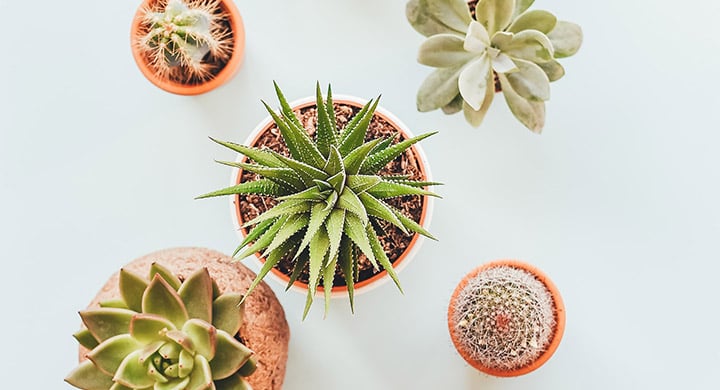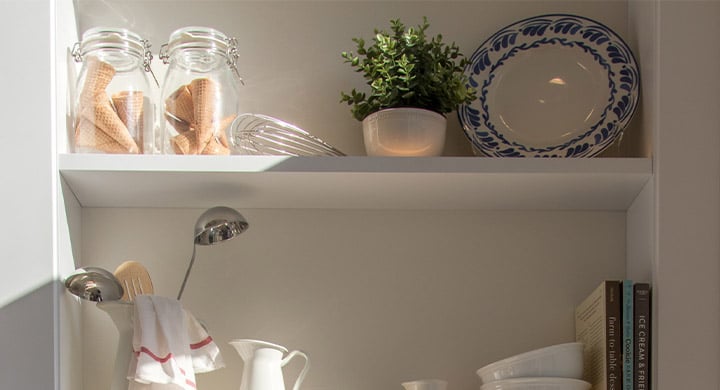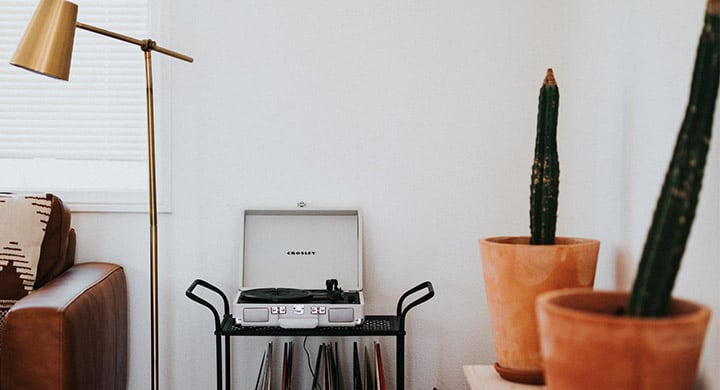Plants are so hot right now. Well, technically, they’re cool — they lose water during transpiration, which means they act like natural misters, cooling the air while increasing your indoor air quality, too. But they’re also, like, sooo hot. Need proof? Look no further than Instagram to find foliage fanatics flocking. But plants are so much more than just social media darlings. Aside from literally keeping us alive by releasing oxygen into the atmosphere, they also have a bunch of benefits on a more everyday level in our homes.

Photo by Annie Spratt on Unsplash
Studies have linked houseplants to better mental health, lower stress and better productivity, among many other benefits. They also look pretty and keep us company. In fact, in a study performed by the Royal Horticultural Society, researchers discovered that talking to your plants really can help them grow faster. Fun fact: The study also found that plants grow faster to the sound of a female voice than to the sound of a male voice. #whoruletheworld
Other studies have experimented with different sound levels and even the kinds of things that are said to plants. Do they respond better to compliments or insults? You can certainly experiment for yourself, but it’s safe to assume that if you’re the kind of person who’s insulting your plants, you might not make a great plant parent.
Unfortunately, houseplants are also hard not to kill.
The death of innocent houseplants has plagued dwellers of interior spaces since the time of the cave people (presumably). The good news is, you only need to take a few steps to avoid plant slaughter and develop a formidable green thumb.

Photo by Katya Austin on Unsplash
Don’t drown your plants.
First rule of Plant Care 101: Plants need water. Any elementary-school student knows that. But houseplants also need drainage, and too often, they don’t get enough of it. Start by using the right type of pot and soil for your plants.
Make sure your pots have holes in the bottom to allow excess water to drain out. A neat trick for improving draining is to line the bottom of your pot with a few layers of packing peanuts before adding the soil (and the plant). This creates a porous section where water can easily trickle away. It’s also a cool use for a non-biodegradable material, which means you’ll be a little greener for the effort!

Photo by Jessica Arends on Unsplash
You should also make sure there’s enough space in the pot for the roots to grow. Otherwise, your plant will be slowly crushed and suffocated by the sides of its own pot — a gruesome and all-too-common fate.
Finally, it’s also a good idea to research the right kind of soil for your plant. Good news is that “research,” in most cases, simply means asking the good folks at your garden store. Different plants thrive in different kinds of soil, and any shop worth its mud will sell different types of dirt with the right balance of nutrients for your specific plant.
Let there be (sufficient) light.
Light is a crucial factor for the well-being of plants. Again, any school kid will tell you that light is the key ingredient in the photosynthesis process that plants need to fuel their systems and survive. There are some species that do well in low or indirect light, but generally speaking, light is usually a good thing.
Think about where your indoor plants are located. Are they near windows? Do those windows get a regular amount of light throughout the day? It’s best to keep an eye on your plants and adjust their position if, for example, their foliage appears paler than usual.

Photo by Jason Leung on Unsplash
Hydrate!
Like all living things, your houseplants need a certain amount of water to live. Certain species require much less than others — for example, cacti and other succulents, which have evolved to live in punishingly dry environments — but all plants need at least some.
Make sure to water your plants on a regular basis. Maybe set a regular reminder on your phone. But don’t go overboard — it’s also possible to overwater your plants, and this can be just as bad for them as going thirsty.

Photo by The Creative Exchange on Unsplash
Listen to your leafy friends.
To give your green buddies the best chance at a long and happy life, it’s important to pay attention to them and keep an eye out for warning signs:
- Are pests present? You might see the pests themselves or telltale signs like spotted leaves, webbing or unusual substances on your plants. Some pests are easier to discourage than others. Common solutions include insecticide and isolating affected plants.
- Wilting leaves are usually a sign of poor hydration. Simplest solution is giving them more water, but flaccid foliage might also indicate poor drainage or compacted soil.
- Fertilizer “crust” building up on your plants’ soil is a sign you’re using too much fertilizer.
- Dust buildup on leaves can clog the pores of your plants and stop them from getting the ingredients they need to photosynthesize and survive. If you see this happening, make sure to clean your plants carefully with lukewarm water.

Photo by Brooke Lark on Unsplash
The right atmosphere.
Plants need a certain level of atmospheric humidity to thrive. Again, water is life, even in vapor form. In winter or dry climes, you might require a humidifier to inject some extra moisture into the air of your home.
Some plants need less than others (like those that have evolved to live in dry environments), but most plants don’t do well in arid conditions.
Get greenspired.
So you’ve found yourself with an advanced case of flora fever? You’ve become a succulent superfan? A fiddle-leaf-fig freak? A variegated monstera monster? Here’s some fun foliage inspiration on Pinterest. Start with our “Houseplant Inspo” search and then go from there.
Take a look at @cleverbloom on Pinterest for specific houseplant care tips. If you desire a sense of nourishing plant care community, search for online gardening communities of all kinds near you, too.

Photo by LOGAN WEAVER on Unsplash
Introducing plants to your home can be a great way to spruce up the environment and raise your spirits, but they can’t help you if they aren’t alive. The tips here are a good start, but make sure to read up on the requirements for the specific types of plants you own. Just like people, all plants thrive in different conditions.
Looking after your plant life is one step toward running a successful, healthy home environment. Find out more here.

Photo by Brooke Cagle on Unsplash
Next steps.
If you’re considering leveling up from flora to fauna parenthood, check out our pet parent post for advice and encouragement. And if you’re looking for even more ways to spruce up your space, check out this blog on how you can modernize your rental without violating your lease. And finally, if all this plant care has you feeling like a grown-up, maybe it’s time to check out renters insurance from Toggle®.
For more tips on adulting like a pro, read this blog.

Photo by Nathan Dumlao on Unsplash
The information included in this blog is for informational purposes only and is not intended as professional or expert advice. It is based on research and the collective experiences of the Toggle Team and has not been verified by any academic institutions, government organizations, or world-renowned scholars, but it does make a lot of sense and we do hope you find it useful. We encourage you to use your own good judgment about what’s appropriate for you.
Links to third-party websites are provided for your convenience only. Toggle has not independently verified any of the information provided therein and makes no representations about the enduring accuracy of such information or any content.









